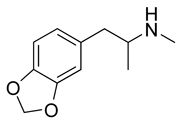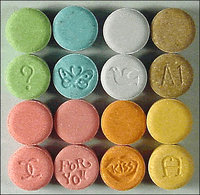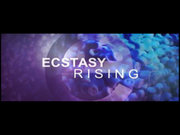The editors of two journals that provide objective scientific investigations of controversial and largely untested medical and mental health practices have criticized proposed research using the drug MDMA (ecstasy) as a treatment for posttraumatic stress disorder. The study, "MDMA-Assisted Psychotherapy in the Treatment of Posttraumatic Stress Disorder," is awaiting final MDMA licensing approval from the Drug Enforcement Administration.
Proponents from the Multidisciplinary Association for Psychedelic Studies (MAPS) claim that it will prove that MDMA has strong potential as a psychotherapeutic drug. The president of MAPS, Rick Doblin, is a longtime proponent of recreational and spiritual use of both LSD and ecstasy. The protocol was developed in the Charleston, South Carolina, area with the assistance of MAPS. The proposed study subjects would be twenty victims of violent assault who have been given diagnoses of posttraumatic stress disorder.
MDMA has recently received national attention because of research published in the journal Science, implicating MDMA in damage to dopamine receptors in mammalian brains. Reductions in dopamine are associated with Parkinson's disease. Although the precise neurological effects of ecstasy remain controversial in the scientific community, there is a widespread consensus that this drug has the potential to do harm in at least certain cases.
Editors Scott Lilienfeld of the Scientific Review of Mental Health Practice and Wallace Sampson of the Scientific Review of Alternative Medicine (SRAM), based on derailed investigations by health advocate E. Patrick Curry, note that the research was approved by the Food and Drug Administration (FDA) in late 2001 and by the independent Western Institutional Review Board in July 2002. In light of reports of damaging effects of MDMA, the editors found the research to be potentially dangerous and possibly in violation of human subjects research ethical standards. They also note that evidence for effectiveness that would justify such research was lacking.
According to Lilienfeld, an associate professor of psychology at Emory University and president of the Society for a Science of Clinical Psychology, the study itself is scientifically questionable at best and meaningless at worst, because the treatment will nor be compared with a meaningful and properly blinded control group consisting of either no therapy or a comparison treatment of known effectiveness.
"One of the most disturbing things about this study," Sampson said, "is that it appears to be the exclusive project of believers in psychedelic mysticism, and based on work of Dr. Sranislav Grof, an early LSD self-experimenter and psychedelic psychotherapist. After LSD and ecstasy use was declared illegal, Grof developed Holotropic Breathwork, a potentially dangerous form of severe hyperventilation, as a legal method of invoking hallucinations. Grof was a long-time fellow of the Esalen Institute, widely considered to be a birthplace of the New Age movement.
Both therapists involved in the research, principal investigator Michael Mithoefer and his wife, Ann Mithoefer, a psychiatric nurse, are trained practitioners of Grof's Holotropic Breathwork. The investigators' background, although not bearing directly on the methodological quality of the study, raises troubling questions concerning their capacity to conduct the research and to evaluate the data impartially without strong a priori allegiances.
Sampson and Lilienfeld question how such an experiment was approved by the FDA and an Institutional Review Board. Efforts by MAPS and the principal investigator, Dr. Mithoeffer, to win IRB support from the Medical University of South Carolina were rebuffed earlier this year. The project was approved within weeks when submitted to the independent IRB.
Sampson and Lilienfeld concur that comments in the popular press presenting this Charleston study as a possible "tiebreaker" in the debate over the effects of MDMA are misplaced. Lilienfeld states: "It is disturbing that scientifically flawed and potentially dangerous research like this could pass muster with the FDA, an IRB, and popular journalism."
COPYRIGHT 2003 Committee for the Scientific Investigation of Claims of the Paranormal
COPYRIGHT 2003 Gale Group




